What do you need to know to choose the right dog training classes?
A lot more than you might think!
It’s not just a matter of searching “dog training classes near me” and choosing the top result!
You’re not buying a pizza, after all; you’re training your pooch to be a well-behaved life-long companion!
Read on to learn about the different types of classes, what makes a great trainer, and how to choose the right one for your pup!
Related: How to stop your dog from barking in class

Looking for more dog training tips & ideas? Sign up for our newsletter and get the top tips delivered right to your inbox twice a week!
Table of Contents
Types Dog Training Classes
Before we can hone in on the perfect class, we need to know what type of class your dog needs!
Right now, we’re talking more about the skills taught in the classes versus training methods. We’ll get to those in a minute.
While different schools may use different names for the types of classes that they offer, for the most part all programs fall under one of these descriptions.
1. Basic Puppy Training
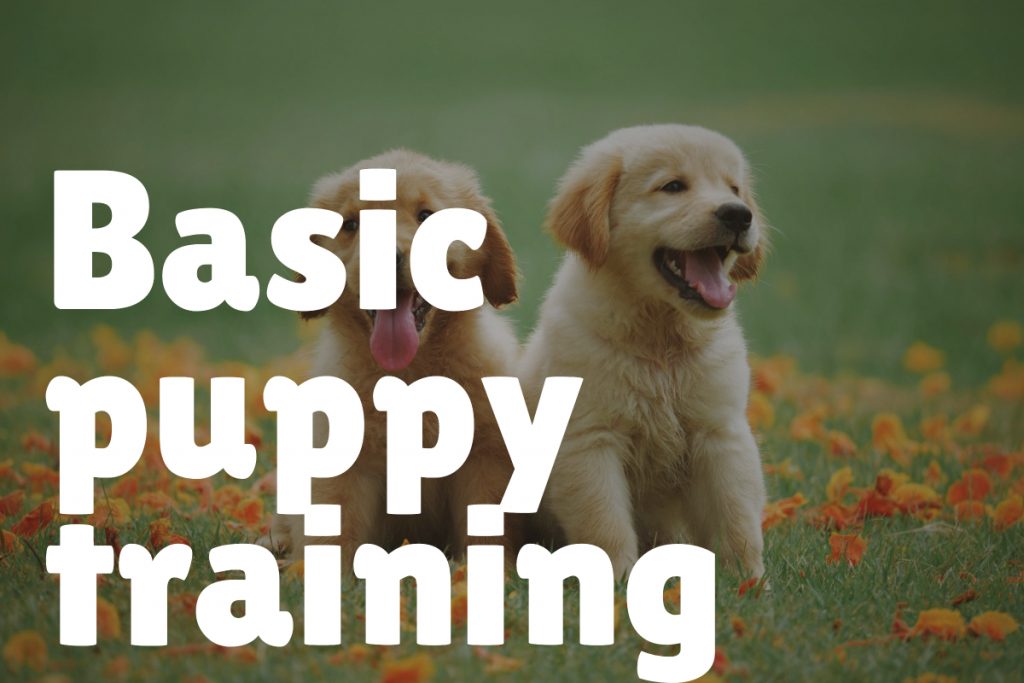
This is your super basic “must-know skills” class. You’ll learn how to communicate with your puppy as well as some simple commands like:
- How to come when called.
- How to potty train your dog.
- How to walk nicely on a leash.
Along with giving you a good groundwork for future training, puppy classes are a great way to socialize your dog.
2. Basic Adult Dog Training
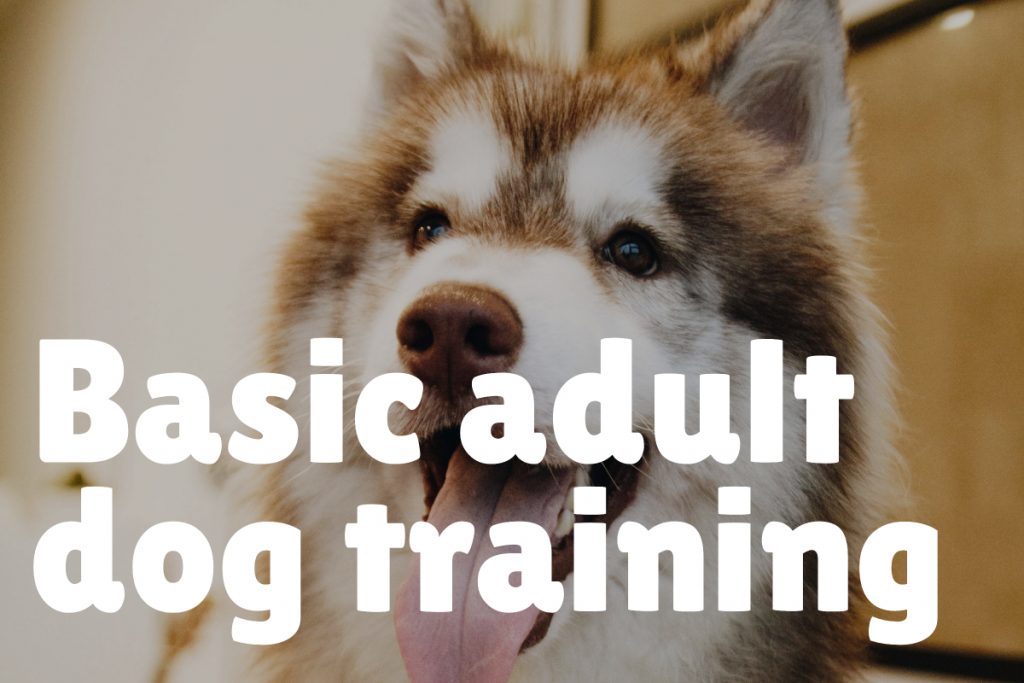
The same concepts as puppy training, except designed for adult dogs who haven’t had a chance to learn the basic skills.
For example, if you rescue an adult dog that has spent his entire existence in a cage, this is where you want to start.
3. Intermediate Dog Training
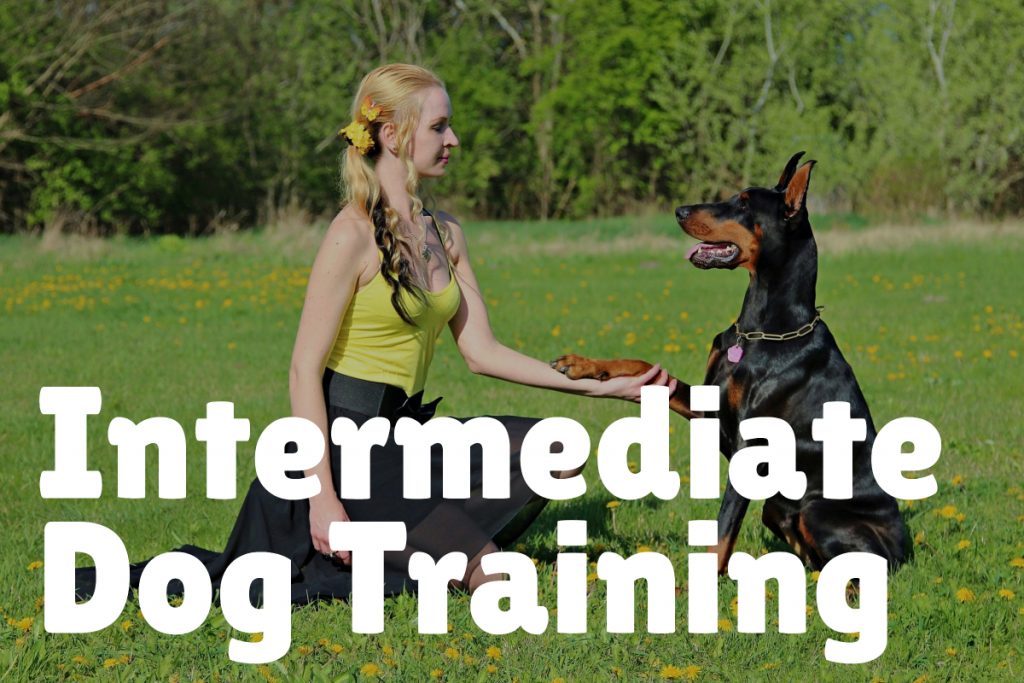
If your pup already has the basics down, consider intermediate training.
In this class, you’ll reinforce those cues across longer distances and amidst more distractions.
You’ll also learn new skills, like “crate up” or “heel.”
4. Advanced Training
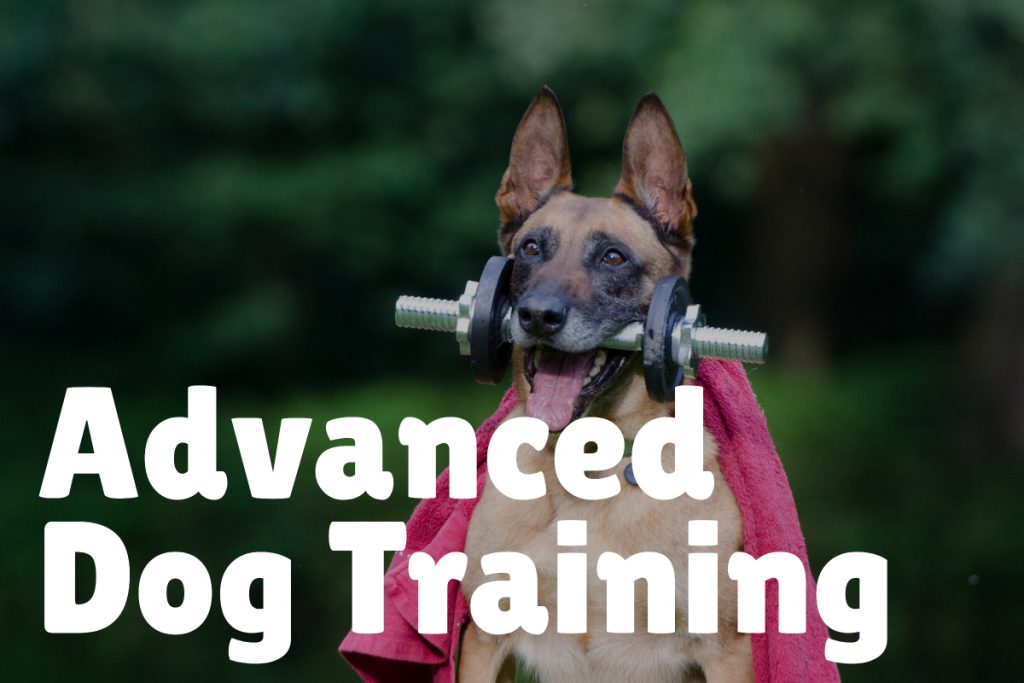
Has Fido mastered the basics even with distractions? Does he already heel or crate up on command?
Then you may be ready for advanced training!
Here, he’ll learn things like how to have good manners (no jumping on people!), how to heel even when he sees his arch nemesis the squirrel, and more.
Typically, one of the four types of training classes above will work for your dog. The following are more for specific training needs.
5. Specialized Dog Training
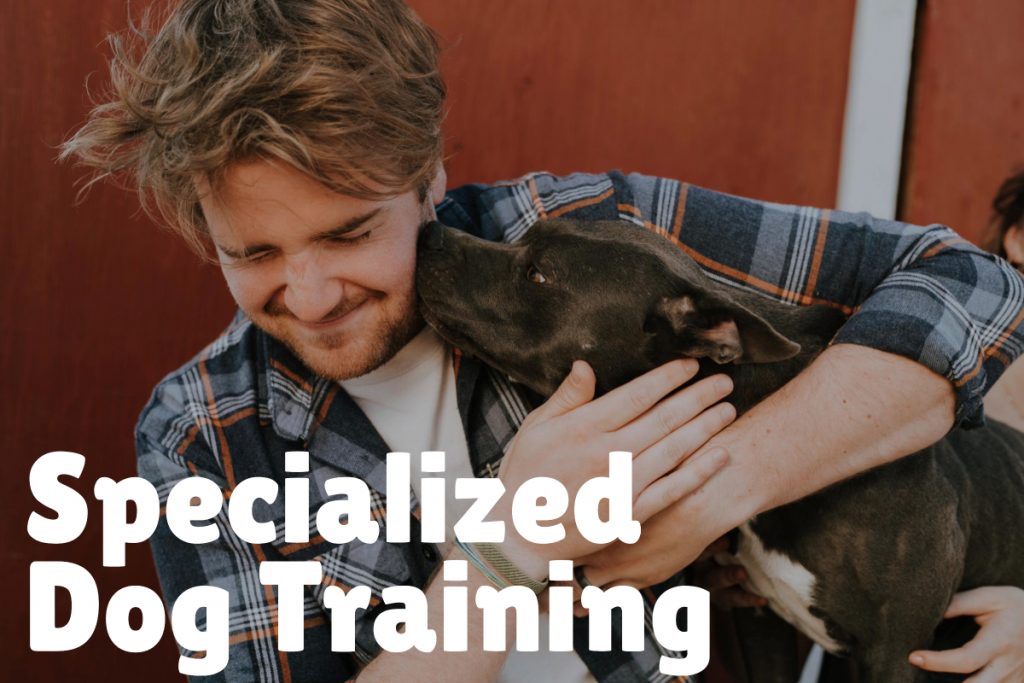
If you hope to train Fido to work as a service dog, a police dog, or some other type of specialized job, you’ll need training specific to that skill.
Your best bet is to contact an organization that works with the type of dog you want to train, if that makes sense.
In other words, if you want to train a therapy dog, contact an organization that specializes in therapy dog work.
Want your dog to work as a K9 officer? Call the police and ask which trainer they recommend.
6. “Problem Dog” Training
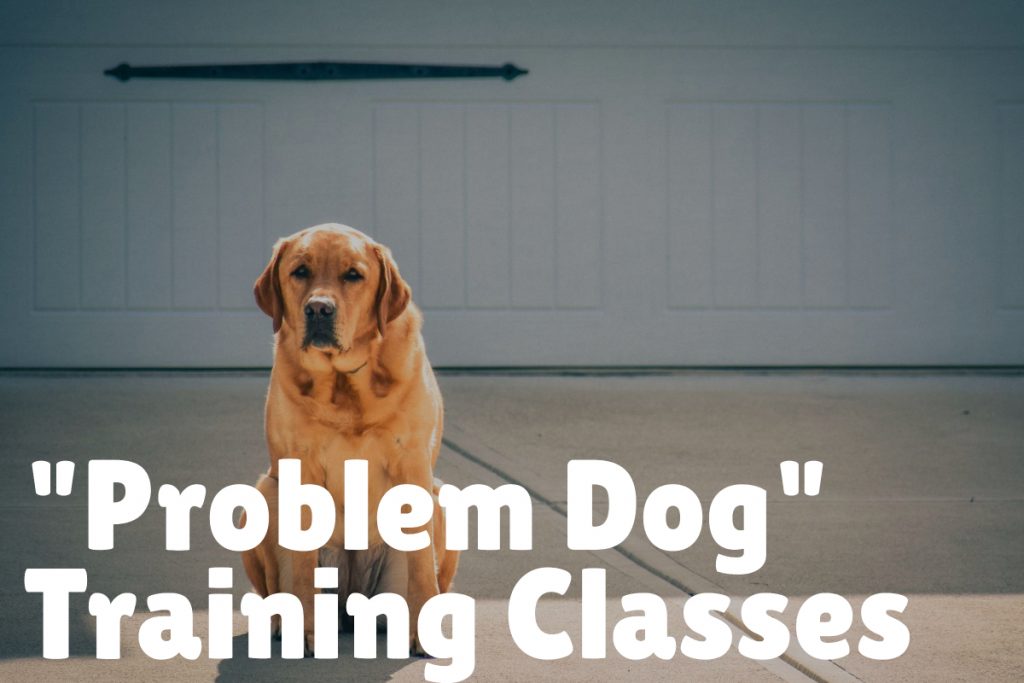
I hate to use the phrase “problem dog” because 99.9999% of the time, the problem isn’t the dog, it’s the way he’s been trained.
That said, we sometimes adopt dogs that are challenging to train because of their lives before they met us.
For example, my boy Cooper was 6 months old when we adopted him, and he spent those first 6 months in a tiny cage with ten other pups.
As a result, he had major food insecurities and needed advanced training to teach him to stop stealing it every chance he got.
Other times when you may want “problem dog” training include:
- When dealing with an aggressive dog
- When your multi-dog family needs help getting along
- When dealing with a dog with major anxiety issues
7. Agility Dog Training
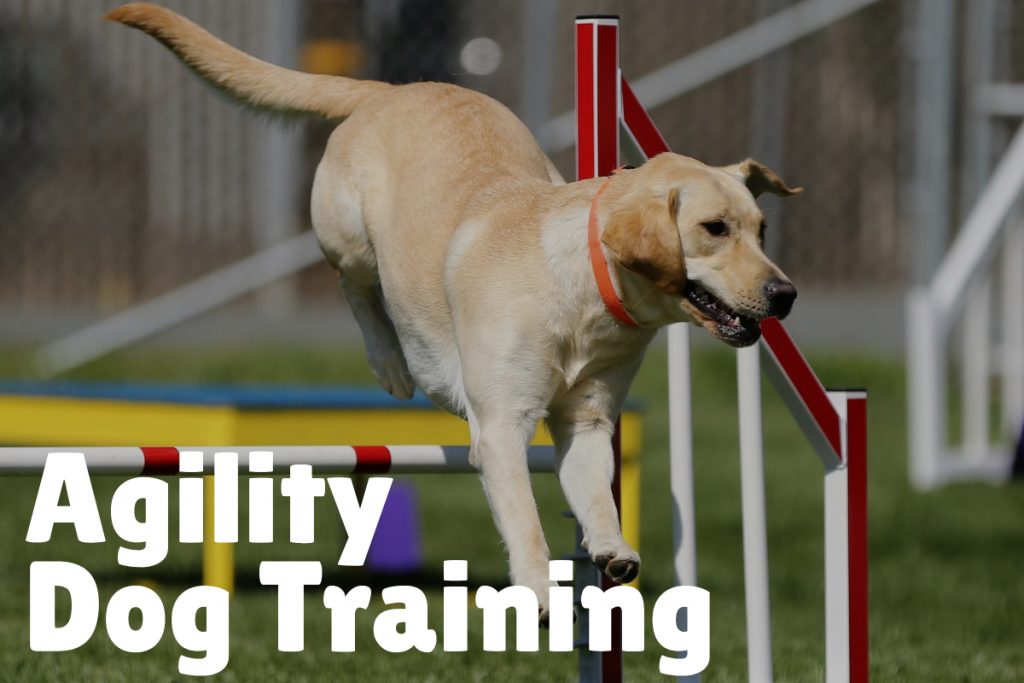
While most people use agility dog training to get their pups ready to become show dogs, you don’t have to be prepping a future Best in Show to find it beneficial.
Agility training (also called coursing or coursework) is a fun way to bond with your dog.
It’s also a great way to engage a high-energy, high-intelligence breed.
Again, your local training school may use different names to refer to each of these classes, so your best bet is to read the descriptions and find one that matches your needs.
Now that we have an idea of the types of dog training classes, let’s talk about how to choose the right one for your dog.
How to choose the right class
We talked about this the other day in “Should I take my dog to training classes,” but I want to go over a few points again as well as introduce some new tips.
Set your budget and schedule

First things first: decide how much you can afford to spend on training classes AND how they’ll fit into your schedule.
According to WhatItCosts, a basic puppy training class runs about $100-150 for a 6-week course, while advanced classes range between $200-250.
If you want individual training, expect to pay at least double that ($300-700, depending on the trainer).
You’ll need to decide how you’ll fit training into your schedule. Remember to account for the time spent driving to and from the class!
Define your own training philosophy

Your next step is deciding what type of training method you want for your dog.
First, take a look at the most popular types of training strategies and see which one best matches up with your philosophy.
Then, as you peruse the websites and interview potential trainers, ask about the methods that they use. If they’re not a good fit, move on to the next one!
While some methods can cross over into others, you don’t want to use shock collar training if you’re all about positive reinforcement methods.
Likewise, you don’t want an alpha dog trainer if you personally believe in science-based training.
Decide between group or individual classes
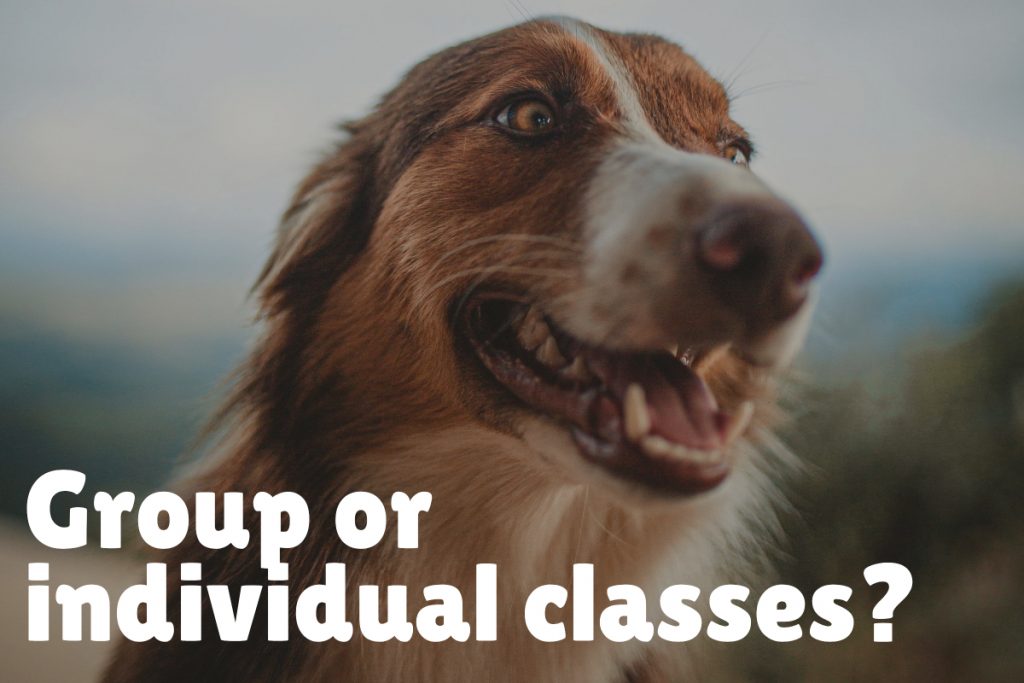
Now that you’ve narrowed down your list to a few potential classes, it’s time to decide if you want group or one-on-one training.
Remember, individualized training will cost a lot more than group classes. Plus, group classes give your dog a chance to socialize.
Still, there are cases where one-on-one is better. Examples include:
- Dogs that just plain hate other dogs
- Aggressive dogs (at least in the early stages of training)
- Dogs with medical conditions that can be worsened by exposure to other pups.
Check certifications, awards and accolades

At a minimum, you’ll want to check a potential trainer’s certifications and education background.
I also recommend asking about awards and professional accolades. Finally, ask for a list of references that you can call (and actually call them!).
Ask to audit a class
Before handing over your credit card, ask if you can come “audit” a class to see how everyone interacts together.
If that’s not possible for whatever reason, then ask for a “meet and greet” between your dog and his potential teacher.
Follow these simple steps and you’ll have no problem finding just the right dog training classes for your pooch!


We don’t have a dog ourselves but a few months ago, while on holidays in France, I was walking with my 3 kids in an empty street and we saw this German shepard without leach coming towards my daughter. He was running really fast and seemed to be alone. He went straight for my daughter barking and biting. She got bit twice in the back of her leg really hard. The owner arrived running as well, took the dog and left before we could even react. My daughter and smallest son were so scared. Mostly my smallest is scared of dogs now. It’s such a pity. I think dog owners should give their dogs training to avoid this kind of incidents. I still have no clue why the dog went for my daughter and not for me or my sons.
My niece recently got two beagle pups and they are a handful. She’s been working hard to potty train them and to make them stop chewing on stuff. I will share this post with her so she knows how to choose where to get help to train the pups.
Oohhh no, I haven’t done so. As a matter of fact, I don’t have a dog of my own. I simply love them, though. I wanted to have one a few years back. Now, I have a better idea.
This post is right on time. We have been looking for a trainer for our Dalmatian, and it’s been a frustrating process. I will now take into consideration some things from this post to carry with me in our search for a dog trainer.
BASIC PUPPY TRAINING is really important as we need initial or foundation classes. If they learn it earlier, the easier for dogs to be trained.
Training a new dog can be mentally taxing, especially if they’re not getting the hang of going outside to potty, or basic commands. I think dog classes are a good idea.
I can see the reasoning to get your dog into training classes. Nobody wants a dog who’s obnoxious and won’t listen.
I wish more people would train their dog properly. I can think of times and I’m cooking if I need training classes very useful.
This is super helpful! We weren’t sure what type of dog training we needed for our newly adopted doggie, but your guidance is leading us in the right direction. 🙂
Great tips. When it comes to dog training options, there are a lot out there to choose from.
I don’t have a dog and haven’t since I was a kid but I would imagine that it’s really important to get your dog into the right class for his/her temperament, age, and role in your life/family.